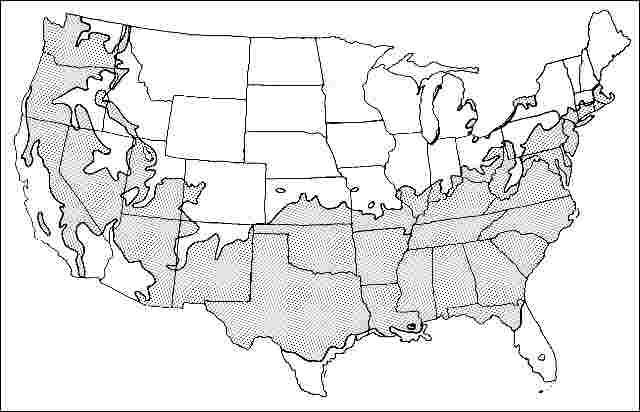Pinus brutia var. eldarica: Mondell Pine
Introduction
Growing rapidly when young, Mondell pine reaches heights of 30 to 40 feet and is quite dense. This tree stands out among the pines due to the upright growth habit that stays with the tree throughout its life. The paired, medium green needles are five- to 6.5-inches long and joined by three-inch-long cones. The tree is most often grown in parts of Texas.

Credit: Ed Gilman, UF/IFAS
General Information
Scientific name: Pinus brutia var. eldarica
Pronunciation: PIE-nus broo-tee-uh variety ell-DAR-ick-uh
Common name(s): Mondell pine
Family: Pinaceae
USDA hardiness zones: 6A through 10B (Figure 2)
Origin: not native to North America
Invasive potential: not assessed/incomplete assessment
Uses: reclamation; specimen; highway median; bonsai

Credit: UF/IFAS
Description
Height: 30 to 40 feet
Spread: 25 to 30 feet
Crown uniformity: symmetrical
Crown shape: upright/erect, pyramidal
Crown density: moderate
Growth rate: moderate
Texture: fine
Foliage
Leaf arrangement: alternate
Leaf type: simple
Leaf margin: entire
Leaf shape: needle-like (filiform)
Leaf venation: parallel
Leaf type and persistence: fragrant, needled evergreen, evergreen
Leaf blade length: unknown
Leaf color: green
Fall color: no color change
Fall characteristic: not showy
Flower
Flower color: yellow
Flower characteristics: not showy
Fruit
Fruit shape: oval, cone
Fruit length: 1 to 3 inches
Fruit covering: dry or hard
Fruit color: brown
Fruit characteristics: attracts squirrels/mammals; not showy; fruit/leaves a litter problem
Trunk and Branches
Trunk/bark/branches: branches don't droop; not showy; typically one trunk; thorns
Pruning requirement: little required
Breakage: susceptible to breakage
Current year twig color: brown
Current year twig thickness: medium
Wood specific gravity: unknown
Culture
Light requirement: full sun
Soil tolerances: clay; sand; loam; alkaline; acidic; well-drained
Drought tolerance: high
Aerosol salt tolerance: unknown
Other
Roots: not a problem
Winter interest: no
Outstanding tree: no
Ozone sensitivity: unknown
Verticillium wilt susceptibility: resistant
Pest resistance: resistant to pests/diseases
Use and Management
The dense habit would make it well suited as a fine-textured screen. It is often used as a specimen, planted in groups or by itself in an open lawn area.
Mondell Pine should be grown in full sun on any well-drained soil and thrives in desert-like conditions. It also grows well in alkaline or clay soil.
Propagation is by seed.
Pests and Diseases
Pine tip moth can cause some damage to twigs.



